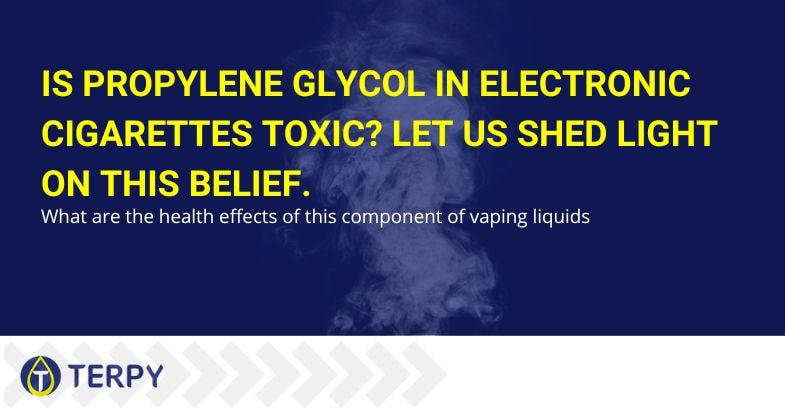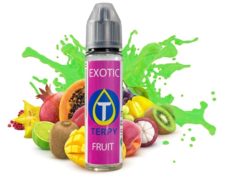Modified on: 27/05/2024
What are the health effects of this component of vaping liquids
The vaping e-liquid base mainly includes two compounds: vegetable glycerine and propylene glycol. False information is often spread about the latter; in particular, this substance is described as ‘toxic’. If you are thinking of quitting smoking and turning to e-cigarettes to make the task easier, you have probably searched for information online about whether vaping is harmful to your health.
Reading that e-cig liquids are toxic didn’t convince you, and you want to learn more? In this article, we will clarify whether glycol is toxic, what its possible effects on the body are and why it is used to produce vaping liquids.


Is propylene glycol toxic or carcinogenic? Absolutely not!
It cannot be ruled out that you may have read or heard that electronic cigarettes are just as harmful as analogue cigarettes, if not more so. Of course, this is not the case. Suffice it to say that in a traditional cigarette there are around 4,000 substances (many of which are toxic) which are taken in through combustion, whereas in an e-cig the inhalation process is vaporization and there are only four substances in vaping liquids.
One of these is propylene glycol, and it is precisely on this substance that e-cig detractors are lashing out: among the inaccuracies surrounding this substance are not only those pertaining to its alleged toxicity but also those according to which it is carcinogenic. And why? Well, probably because glycol is a petroleum derivative.
OK, it is understandable that at first, one might think that a substance derived from petroleum might be harmful to health, but this is not the case. It is no coincidence that propylene glycol is not only used for the tobacco, fruity and creamy liquids that vapers like so much, but also as a food excipient and, unless taken in disproportionate quantities, is not dangerous to human health. The FDA (Food and Drug Administration) approved its use some time ago before it was used to produce liquids for electronic cigarettes.
Therefore, you can rest easy (or quiet): glycol is not toxic. However, it is good to know that, in some cases, it can give side effects.
Read also: How to choose the ideal atomizer to meet your needs
What are the side effects of propylene glycol?
You probably don’t know this, but you have likely taken propylene glycol several times since you were a child; long before you could even think of starting vaping. This odourless and colourless liquid substance has long been used in food products such as cream, ice cream and soft drinks, but also cosmetics and hygiene products such as hand creams, shampoo, and toothpaste.
This proves that it is a safe and non-toxic substance. Nevertheless, in some situations, its intake can cause problems. For example, if one swallows propylene glycol in large quantities (this can happen during vaping when the liquid is not vaporized well and ends up under the tongue), the throat dries out and the mucous membranes become irritated. However, drinking plenty of water immediately is sufficient to avoid the onset of such symptoms.
It should be pointed out, however, that ingesting an excessive amount of glycol could have the unwanted effects of asthma and reddening the skin. Moreover, those who know they have an allergy to this substance should avoid taking it in high doses to avoid skin rashes, nausea, headaches, or dizziness. However, being allergic to glycol does not affect the possibility of using an electronic cigarette; there are liquids whose composition does not include this substance.


What glycol is used for in the electronic cigarette
As we have already mentioned, propylene glycol is one of the main components of electronic cigarette liquids. But why is this substance used in the preparation of liquid bases to which vaping flavours and possibly liquid nicotine are added?
Well, the percentage of glycol and vegetable glycerine affects vaping: a liquid with a balanced concentration of both compounds is more suitable for cheek shots and thus produces a less consistent vapour; conversely, a liquid with more glycerine produces a dense vapour suitable for lung shots.
Both substances, therefore, impact vapour production, but in different ways.
Read also: How to Regenerate the Electronic Cigarette Atomizer: A Beginner’s Guide
In conclusion
In this article, you have discovered that propylene glycol is neither toxic nor carcinogenic. Furthermore, we have clarified that you can vape even if you are allergic to this compound. If you are looking for vaping liquids with different concentrations of glycol and glycerine, know that at Terpy you will find a wide selection of flavours and aromas with and without nicotine.
Pay a visit to Terpy.com!





